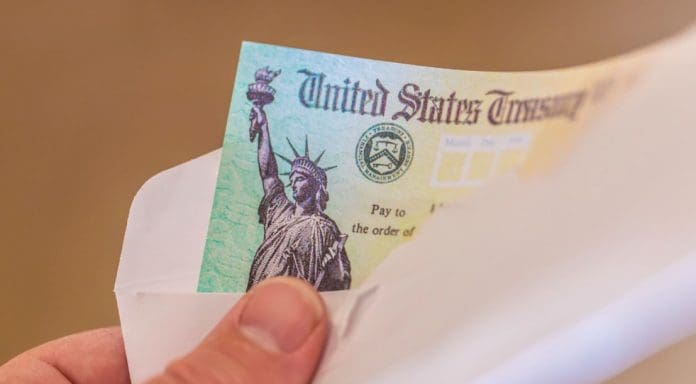With chances of any further federal stimulus checks fading, more states are moving in to help their residents at a time they need support as much as they did during the pandemic. The total number of states supporting their residents with inflation relief payments has increased to 18 and most of them will start payments by the third quarter of 2022.
Americans survived during the pandemic thanks to the $5 trillion deluge of financial support, a substantial part of which was directly transferred to Americans in the form of stimulus checks. There were a host of other measures for various sectors including for business, state, cities, local and tribal bodies, and other groups affected by the pandemic. This was distributed over a period of two years covering the pandemic and its aftermath.
Over $1 trillion made its way into personal accounts of low and moderate-income groups through three rounds of direct stimulus checks, the extended unemployment check, and the enhanced Child Tax Credit stimulus checks. Trillions benefitted Americans indirectly through enhancement programs such as SNAP.
Stimulus checks prevented a recession in the peak period of the pandemic as people had money in their hands to put food on the table, pay their debts and installments, and keep abreast of the latest installment payments of loans and credit cards.
By the third stimulus check, people had extra money in hand, and this led to an increase in the purchasing of citizens. This led to a spike in the demand for goods, more than what the companies could manufacture at that stage. The economy was still recovering from the pandemic and people were yet to join the workforce in large numbers.
This shortage of workers had more to do with the fear of social mixing so soon after the pandemic. People also had enough money in their pockets, so the pressure of earning to provide for their families did not exist at that stage. Even after providing for their families, paying off high-interest debts such as credit cards, and even managing to invest a part of their savings in stocks and other saving instruments.
But the euphoria of the stimulus checks soon evaporated and gave way to creeping inflation that started in the third quarter even as the American economy went through a brief boom period that lasted the whole of 2021.
The Stimulus Checks Were Partially Responsible For The Inflation Feel Experts
Inflation is a natural and normal side effect of economic expansion. The growth of businesses leads to a demand for more workers. This leads to a drop in the unemployment figures and households consequently have more money to spend in their hands. This naturally leads to an increase in demand for services and goods. And this leads to a rise in prices.
Prices soon began to rise and there was a lull in supply as companies struggled to keep up with production. They failed in that respect as the demand was too high, with people having surplus cash in their hands.
The war in Europe complicated matters as Russia, the third-largest producer of petroleum products in the world, stopped supplies. It immediately affected the price of gasoline and allied products and the effect was felt across industries.
The impact that the pandemic had on the economy was neither normal nor natural and that same is the case with the 8.3% inflation rate, which is expected to gradually slide down after stubbornly sticking at a 40-year high for around three quarters.
Thus, there is no doubt that the pandemic was partially to blame for having caused part of the record rise in inflation.
While the whole world economy was under pressure and had seen a substantial rise in the rate of inflation, it has been way higher for the American economy. While developed nations in the European Union and the UK saw figures hovering around the 5% to 6% mark, it was way higher for the US with the figures around the 8.5% to 9.1% mark.
Economists have attributed this difference to stimulus checks. The San Francisco Federal Reserve Bank gave us the most accurate estimate as they said that by March 2022 the government stimulus check might have added around 3 percentage points to the national rate of inflation.
States Move Fast As Persisting Inflation Hurts Economy
The inflation has persisted at a very high level for the past three quarters and has dragged low and moderate-income workers back to the situation they faced immediately after the pandemic before the stimulus checks were announced.
Now more states are moving in to help their residents and their number has increased to around 18. Maine and New Mexico have already started sending out stimulus checks to their residents. Maine has been the most generous of the states and is sending $850 stimulus checks to individual tax filers. Married couples filing jointly will get double that amount if their income is within the eligibility limit set.
Republican-ruled Florida is the latest to announce stimulus checks for a selective group of families. Around 60,000 residents will receive a $450 stimulus check for each child that will start going out this week.
California’s residents too should be getting their stimulus checks by the third quarter of 2021. Governor Gavin Newsom has announced an ambitious plan to send a stimulus check to around 23 million residents of the state. A $17 billion inflation relief package has been signed by the governor along with other measures that include suspension of sales tax on diesel and financial assistance for utility bills and home rent.
Over half the residents of the state will benefit from the stimulus check which could go as high as 1,050, which is based on a 3-tier system of payments of $350, $250, and $200, based on the income of the beneficiaries.
Other states to announce stimulus checks include Colorado, which will send a cashback rebate of $750 for individual taxpayers and double that for couples filing jointly.
Governor Jared Polis has urged residents to file returns by June to receive the direct payments or file for an extension by October 17. But this will delay the stimulus check and payments will only be made in January 2023.






